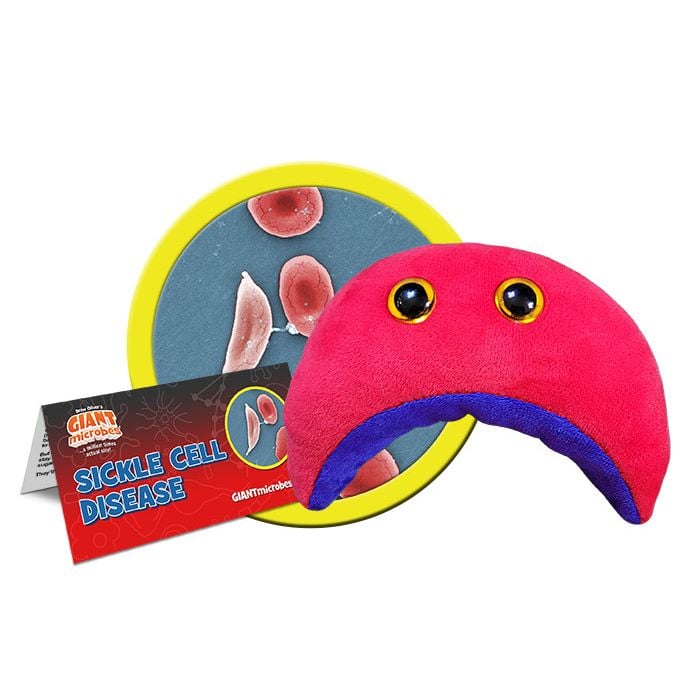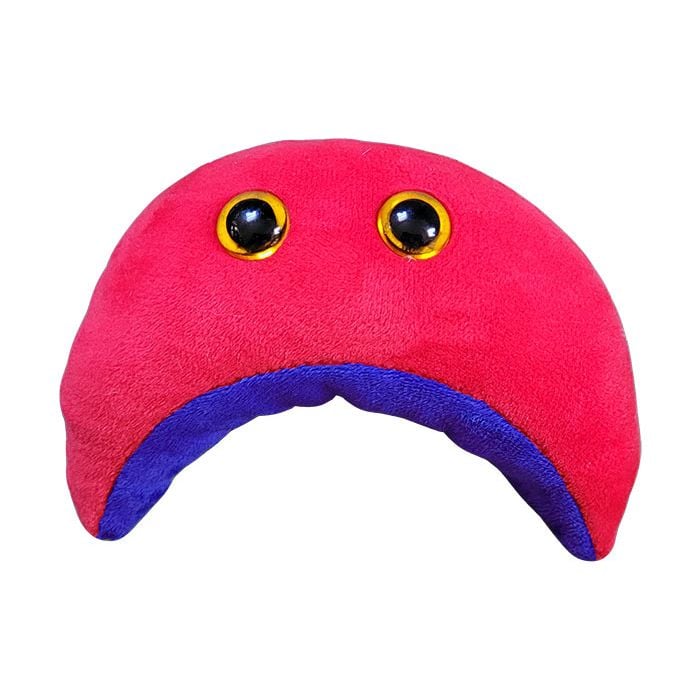Sickle Cell Disease
Sickle cell disease is a group of inherited blood disorders characterized by the presence of abnormal hemoglobin in red blood cells. It affects millions of people worldwide. Under normal conditions, red blood cells are round and move smoothly through blood vessels, supplying the body with oxygen. However, in people with this disease, hemoglobin makes the red blood cells rigid and C-shaped, resembling a sickle agricultural tool.
This plush representation will help raise awareness of sickle cell disease and the challenges for those affected.

5% of your purchase will be donated to the Sickle Cell Association, a not-for-profit organization that strives to diminish suffering and improve the quality of life for those individuals affected by sickle cell disease.
Product Details
Additional Information
| Sizes | Giantmicrobes are based on actual microbes, cells, organisms and other critters, only 1,000,000 times actual size! Gigantic (GG) 16-24" XL (XL) 10-15" Original (PD) 5-8" Keychain (KC) 2-4" with clip |
|---|---|
| Materials | Plush from all new materials. Stuffed with polyester fiber fill. Surface washable: sponge with water & soap, air dry. |
| Packaging | Each plush microbe includes a printed card with fun, educational and fascinating facts about the actual microbe or cell. |
| Safety | Every product meets or exceeds U.S. and European standards for safety. For ages 3 and up. |
All about Sickle Cell Disease
FACTS: Sickle cell disease is a group of inherited blood disorders characterized by the presence of abnormal hemoglobin in red blood cells. Under normal conditions, red blood cells are round and move smoothly through blood vessels, supplying the body with oxygen. However, in people with this disease, hemoglobin makes the red blood cells rigid and C-shaped, resembling a sickle agricultural tool.
Sickle cells die sooner than normal cells, causing a continuous shortage of red blood cells. The misshapen cells also block blood flow in narrow vessels. The result is a lack of oxygen getting into the body’s cells causing fatigue and pain. Those with this disease can have serious health complications such as infection, acute chest syndrome and stroke. Sickle cell disease affects over 100,000 people in the US and millions worldwide. It is more common in certain groups, especially people of African descent.
There are several types of sickle cell disease determined by the genes that encode the formation of hemoglobin. The most common and serious is sickle cell anemia. This occurs when people inherit the “S” gene that codes for sickle-shaped cells from both parents. People with sickle hemoglobin-C disease inherit an “S” gene from one parent and a “C” gene from the other. Those with sickle cell trait inherit one normal hemoglobin gene and one “S” gene and do not have disease symptoms, but do have some protection against malaria. This advantage demonstrates why rates of sickle cell disease tend to be higher in places affected by malaria.
Many adults with the disease are able to study, work and manage with medication and blood transfusions. However, while they may appear okay, their organs are slowly being damaged. The future for a cure is promising with gene therapy drugs in development. Hopefully, those who inherit the genes for sickle cell may soon be able to live without this debilitating disease.





